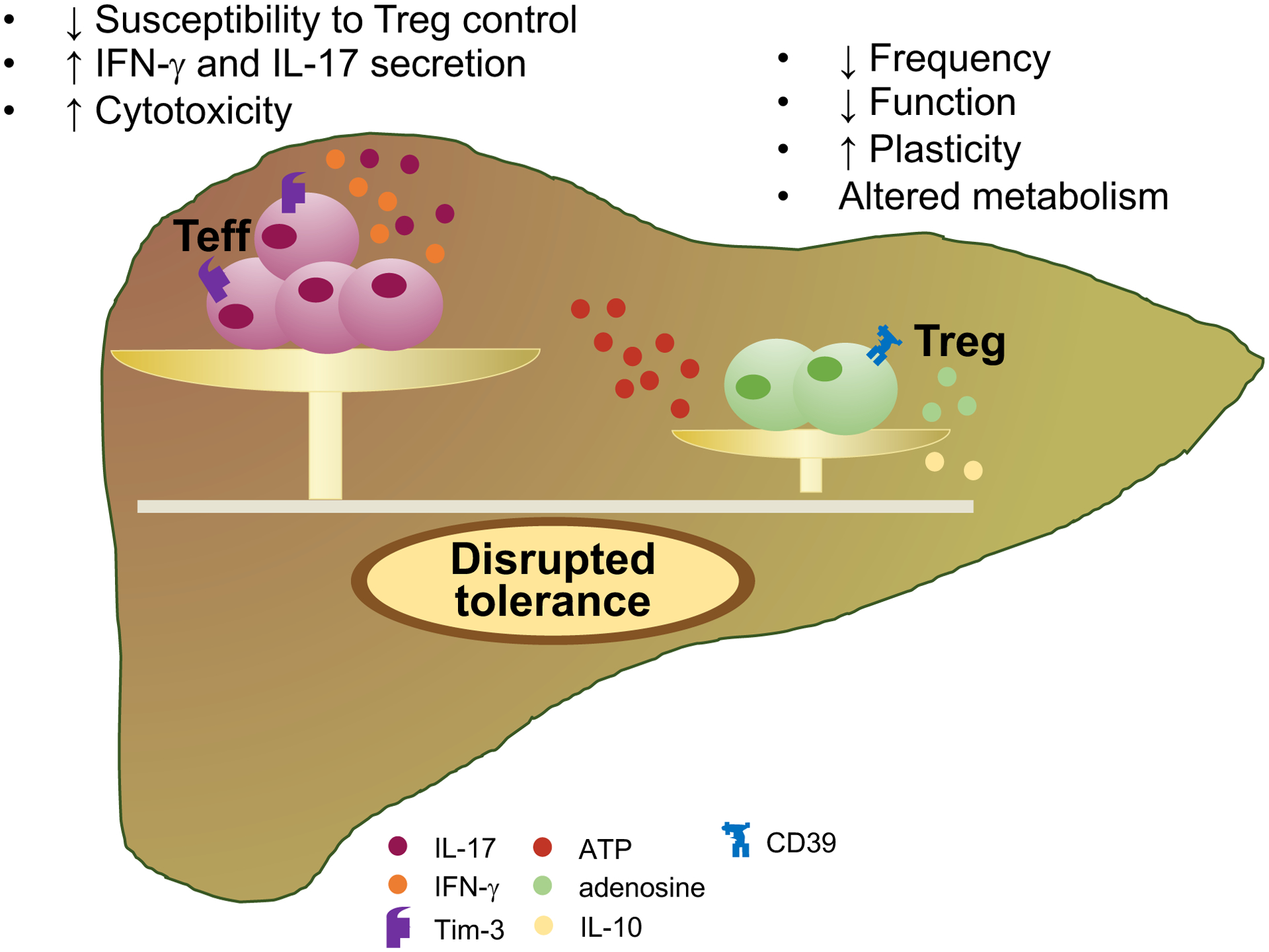Figure 2. Treg impairment in AIH.

Imbalance between effector cells and Tregs contribute to the initiation and progression of tissue damage in AIH. Overwhelming T effector cell immunity that results in enhanced cytotoxicity against hepatocytes and in augmented secretion of IFN-γ and IL-17 pro-inflammatory cytokines is permitted by impaired Treg cell immune responses. Treg impairment might derive from reduced frequency, defective function, increased tendency to acquire effector cell features (plasticity) and altered metabolism, i.e. reduced ability to generate adenosine and to produce IL-10. In turn, effector cells obtained from AIH patients display impaired susceptibility to Treg control. T effector cell (Teff), regulatory T cell (Treg); T-cell-immunoglobulin-and-mucin-domain-3 (Tim-3); adenosine triphosphate (ATP); IFN-gamma (IFN-γ).
